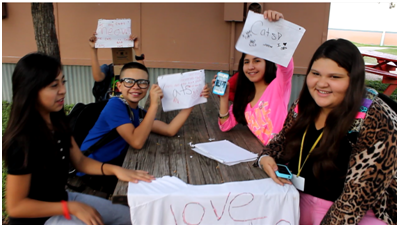Use crowdfunding to engage students and develop 21st-century skills
/Guest contributor Paul Phelps is cofounder of culturebooster, an award-winning curriculum and fundraising platform for 4th–12th grade students to raise money for self-directed projects benefiting their school and community. Students design and lead a 35-day crowdfunding campaign while learning real-world employability skills for their careers, including business fundamentals such as marketing, design, customer service, budgeting, and much more. Parents and educators can learn more about the curriculum here.
Crowdfunding is an online activity in which a person or group asks for small amounts of money from many people. When combined, these small amounts are enough to fund that group’s idea. Successful crowdfunding projects have included motion pictures, music albums, published books, scholarships, theatrical productions, inventions, small businesses, and many more. Recently, LeVar Burton raised $4.5 million to produce new episodes of his legendary Reading Rainbow TV series using crowdfunding.
Collaboration
Many teachers are thinking about the benefits of crowdfunding for classroom needs using sites like Donors Choose and our own culturebooster.com. But they should also consider getting their students involved in their crowdfunding campaigns. This will benefit the fundraising efforts, but more importantly, including them is a huge benefit to the students. It’s an ideal project to forge great social bonds and trust right from the start of your school year because it’s a team effort with you as the mentor.

Crowdfunding inspires students to drive their own learning as they learn how their own natural abilities and interests need to be applied to making real-world projects come to life. It also gives them an opportunity to work together as a team and introduces them to career options that could be good choices for them. When you lead kids through these experiences, their fundamental question of why they need to learn the content you’re teaching them becomes self-evident. Behavior problems are minimized as kids want to work with you and cooperate with the team to succeed at the class crowdfunding goal.
Problem Solving
Crowdfunding campaigns are also an excellent way to develop students’ problem-solving skills. What should the goal of the campaign be? What rewards should be offered to the campaign boosters? How can we tell the world about our campaign? By allowing the students to take charge of the process, educators give them a self-defined purpose and a sense of responsibility for the project. The learning that happens during the campaign can be enhanced if you use a well-constructed set of lesson plans like those at culturebooster.com. Guiding kids through such lesson plans also fulfills academic standards like using applied financial math and persuasive writing in a real-world project.

Creativity
Traditional lecture-style classrooms can work for students with the right skill set and temperament for that style of learning. For others, though, this structure can lead to boredom. Your “other” students are likely extra-creative, social, artistic, or just bursting with an energy they may not know how to channel. In a traditional classroom, it is easy to see how these students would come to believe they have less value than their “easier to manage” peers. But those same character traits are real advantages in many careers. When students see how their personalities are great for a classroom crowdfunding campaign, they become engaged in the learning process even beyond the crowdfunding classroom. Their skills and personalities will be valued in a crowdfunding campaign, just as they will be valued when they begin pursuing careers and hobbies as adults. These are the kids who may invent the incredible, fun rewards that your supporters will love, while others double-check that the team’s math and message (and deadlines) are on track! Harnessing your creative kids is a real boost for their own self-confidence and that of the entire group.
Communication
Recently, culturebooster had a class of fifth grade students. One in particular admitted he had been a bit of a troublemaker until he joined his peers in an ambitious crowdfunding campaign for the school. There, he found his skills for communicating and his unbridled energy perfectly suited for making outbound calls to local businesses he thought would consider donating to their campaign. When he convinced not one but two local businesses to donate $300 each, he discovered he had a unique value and a marketable skill. His self-confidence soared and his peers celebrated his successes, providing him more focus in the classroom going forward and a renewed sense of purpose to his education. You can see Bradlees’s comments about his experience in this video.
What’s your why this year for your classroom?
For even the most studious learner, engagement is a challenge when they are unable to determine why they are being asked to learn something. A crowdfunding campaign is an excellent way to introduce students to the real value of learning. Math is used for budgeting. Writing skills are needed for the video script and for press releases. If funders are located around the country, or around the world, geography comes into play. And when using a well-designed curriculum, these lessons can be aligned with education standards such as Common Core. Crowdfunding is a straightforward approach to keeping students of all backgrounds engaged in the learning process.
Give your why a try
Is there any classroom in America that couldn’t use some extra resources today? Why not plan on making that ask a little differently this year: Involve your students in a crowdfunding campaign and watch their engagement and learning soar (and your job get more fulfilling and easier to manage)!
Paul Phelps













